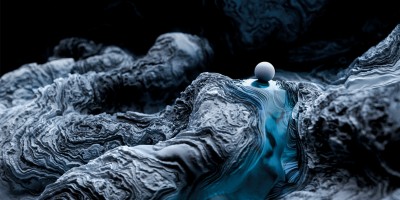In mammals, a circadian timing system composed of a master clock in the brain’s suprachiasmatic nucleus and oscillators in peripheral organs drives daily rhythms of behavior and physiology. A study now reveals that the periodic oxidation of the CLOCK protein enhances the amplitude of cyclic gene expression and affects the daily rhythms of behavior.

References
Dibner, C., Schibler, U. & Albrecht, U. Annu. Rev. Physiol. 72, 517–549 (2010).
Aryal, R. P. et al. Mol. Cell 67, 770–782.e6 (2017).
Peek, C. B. et al. Methods Enzymol. 552, 165–184 (2015).
Adamovich, Y. et al. Cell Metab. 29, 1092–1103.e3 (2019).
Pei, J. et al. Nat. Cell Biol. https://doi.org/10.1038/s41556-019-0420-4 (2019).
Manella, G. & Asher, G. Front. Endocrinol. 7, 162 (2016).
Ding, C. et al. Proc. Natl. Acad. Sci. USA 110, 6771–6776 (2013).
Nelson, K. J. et al. Methods Enzymol. 473, 95–115 (2010).
Kim, J. R., Yoon, H. W., Kwon, K. S., Lee, S. R. & Rhee, S. G. Anal. Biochem. 283, 214–221 (2000).
Huang, N. et al. Science 337, 189–194 (2012).
Giorgio, M. et al. Cell 122, 221–233 (2005).
Yoo, S. H. et al. Proc. Natl. Acad. Sci. USA 101, 5339–5346 (2004).
O’Neill, J. S. & Reddy, A. B. Nature 469, 498–503 (2011).
Cho, C. S., Yoon, H. J., Kim, J. Y., Woo, H. A. & Rhee, S. G. Proc. Natl Acad. Sci. USA 111, 12043–12048 (2014).
Putker, M. et al. Antioxid. Redox Signal. 28, 507–520 (2018).
Author information
Authors and Affiliations
Corresponding author
Ethics declarations
Competing interests
The author declares no competing interests.
Rights and permissions
About this article
Cite this article
Schibler, U. Oxidation of CLOCK boosts circadian rhythms. Nat Cell Biol 21, 1464–1465 (2019). https://doi.org/10.1038/s41556-019-0430-2
Published:
Issue Date:
DOI: https://doi.org/10.1038/s41556-019-0430-2
- Springer Nature Limited


